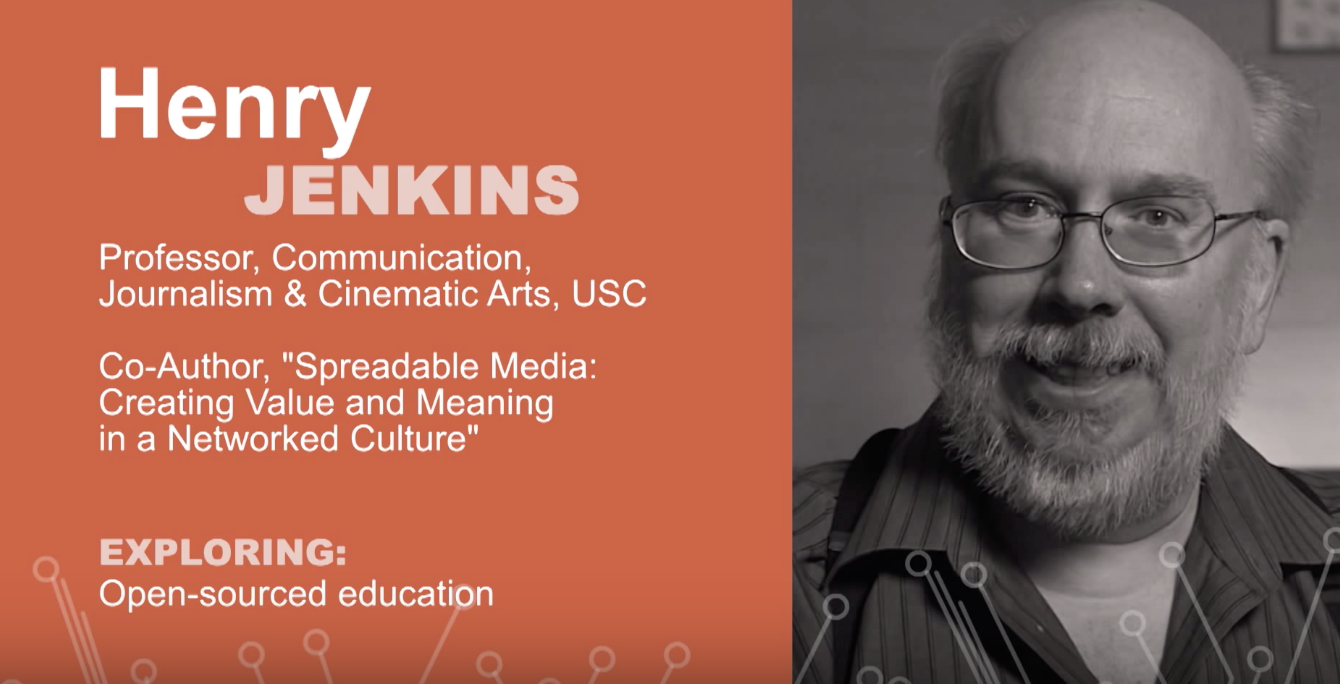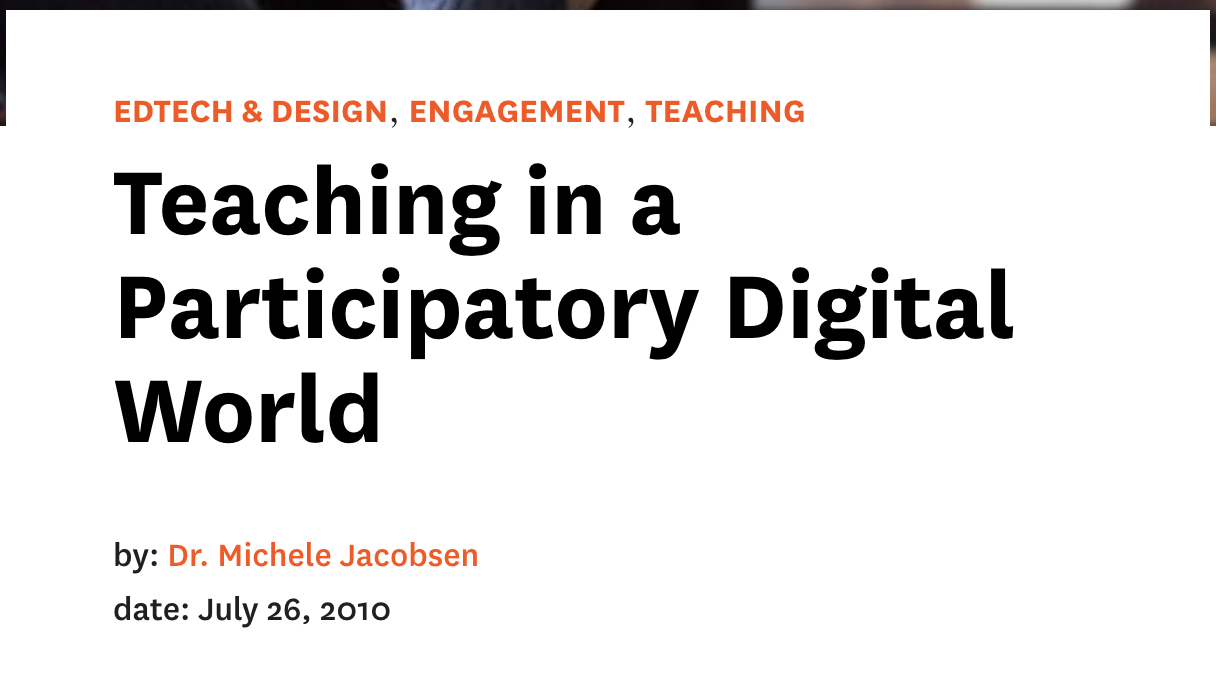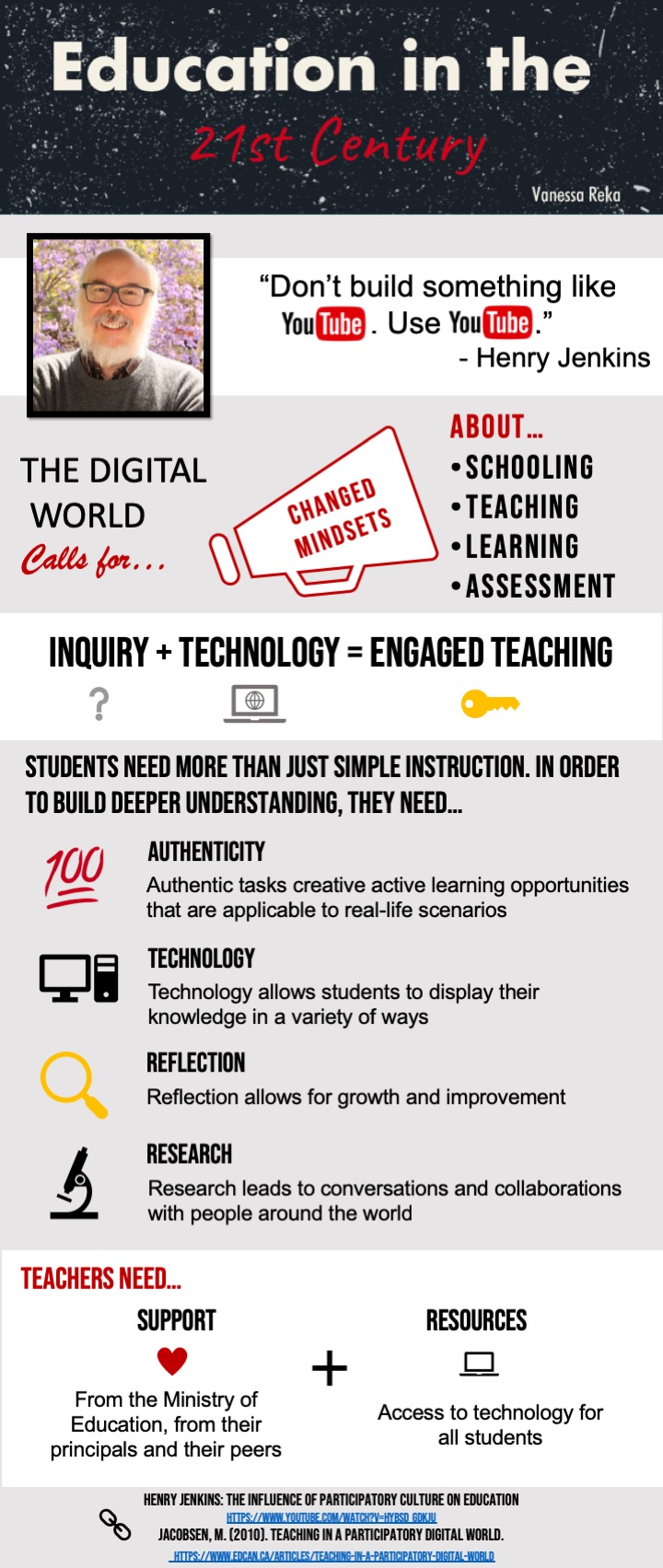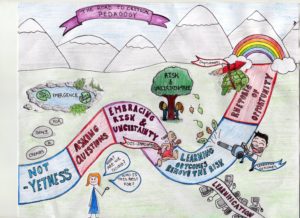For my third multimedia reflection, I made a Twitter Essay based on Ontario Extend’s Technologist Module.

The Technologist module starts off with a video displaying a scenario where “Terry” is struggling to incorporate technology in a way that best support his learners. This is where the Technologist module comes into play. The module starts with an explanation of digital literacies, and how they can be defined in multiple ways. JISC’s Guide to Developing Digital Literacies, defines Digital Literacy as “…capabilities which fit an individual for living, learning and working in digital society”. The module stresses that digital literacy is developed over time, and is an ongoing process. The module then talks about the design-thinking approach, which focuses on designing things strategically and with purpose in mind. The design-thinking approach is outlined as six steps: Empathize, Define, Ideate, Prototype, Connect and Test. The module goes into detail about each of the steps, and provides resources on how to help implement them.
Overall, I have mixed feelings about the module. While I think the module provides a great array of valuable information, it can be overwhelming at times. As we discussed in our last class, there are a lot of accessibility issues with this module (e.g. videos with only text and no sound, contrasting colours, multiple hyperlinks etc.). For many people, this module can be overwhelming, and hard to use, as there is a lot of text with many redirecting links. I think if the actual information and layout of the website was structured differently, the module would be more engaging and easier to look through. It is ironic that there are these issues with the site, as had the website developers taken more time to “empathize” with the public and educators, they would have learned about these issues, and prevented them.
The actual content in the Technologist module is good. It provides educators with easy steps to follow and use to create plans for implementing technology in their classroom. I like how the module places a large focus on empathizing with the learners. Since the tools are for the learners, it only makes sense that their thoughts and feelings should be taken into account. I think that the module will be beneficial to educators, and will help them learn how to incorporate technology in a meaningful way. In the future, I plan on referring back to this module when encountering an issue I would like to solve through technology. This site is a valuable resource to educators, and provides a great framework for incorporating technology in the classroom.
I chose to do a Twitter essay as I wanted to immerse myself in a fully technological-based medium. For my first multimedia reflection, I created a SketchNote which I illustrated by hand. For my second reflection, I created a Piktochart, which was a step towards technology, but still heavily involved visual and artistic elements. I wanted to challenge myself for the third reflection by creating a Twitter essay that required being concise with my words and thoughts. I enjoyed using Twitter as it allowed me to concisely summarize my thoughts on the module, by keeping tweets at 280 characters or less. I also liked that I could incorporate pictures and GIFs into my essay. The module had a lot of amazing graphics (e.g. mind maps), that complemented the tweets well. I also liked that through using the hashtags’ #UWinDig and #OntarioExtend, I was able to connect with my peers as well as other educators. I enjoyed having this extra level of connectivity that was missing from my first two multimedia reflections. In my Twitter essay, I summarize the module and give my thoughts about each specific aspect.
Click this link, search up my username (@_ms_reka), or look below to view my Twitter essay:
1. In this twitter essay I will be talking about eCampus Ontario's Technologist Module. This module helps educators integrate technology into their classrooms in a meaningful way, and helps to address learning challenges. #UWinDig #OntarioExtend pic.twitter.com/ANySRX5snQ
— Ms. Reka (@_ms_reka) February 21, 2019
3. As outlined in the JISC guide, there are 7 elements of digital literacy: information literacy, digital scholarship, learning skills, ICT literacy, career & identity management, and communications & collaboration. Digital literacy = development. #UWinDig #OntarioExtend pic.twitter.com/fycQPp32oC
— Ms. Reka (@_ms_reka) February 22, 2019
5. The Technologist module has a 6 step Design Thinking process. Step 1 is to empathize with the user, then you have to define the issue, ideate a solution, test out the prototype, connect, and test out the idea. #UWinDig #OntarioExtend pic.twitter.com/TvdQGM1O0d
— Ms. Reka (@_ms_reka) February 22, 2019
7. After empathizing, you need to pinpoint the issue, and define the challenge. The challenge should be specific and focused, be motivating and inspiring, and should address the issues uncovered during empathy. #UWinDig #OntarioExtend pic.twitter.com/qrVZDqrD23
— Ms. Reka (@_ms_reka) February 22, 2019
9. Ideate is when the problem solving comes into play. This step involves coming up with an idea about how technology can fix your learner challenge. When brainstorming ideas it can be helpful to use a mind map, like the one below. #UWinDig #OntarioExtend pic.twitter.com/V7BrGISSIm
— Ms. Reka (@_ms_reka) February 22, 2019
9.1 Oops I attached the wrong Mind Map. This is the one that I meant to include. #UWinDig #OntarioExtend pic.twitter.com/HfhwhHU2qe
— Ms. Reka (@_ms_reka) February 22, 2019
11. Once a tool is selected it is important to evaluate it. This can be done through the SECTIONS model (by Anthony William Bates), which helps determine how beneficial the tool is overall for supporting student learning. #UWinDig #OntarioExtend pic.twitter.com/vGafOOdTrr
— Ms. Reka (@_ms_reka) February 22, 2019
13. Sharing allows for feedback to obtained. It allows you to figure out what worked, what didn't and how you can improve. Using this feedback you can polish up your idea, and refine it to meet the most important needs. #UWinDig #OntarioExtend pic.twitter.com/saCNZaNfP8
— Ms. Reka (@_ms_reka) February 22, 2019
15. In summary, the Technologist Module is a great method for implementing technology into the classroom. It helped to broaden my knowledge on digital literacy, and gave me tools I can implement in my future classroom. #UWinDig #OntarioExtend pic.twitter.com/85apoA9hu3
— Ms. Reka (@_ms_reka) February 22, 2019
References:
Extend Ontario. Technologist Module. Retrieved from,




